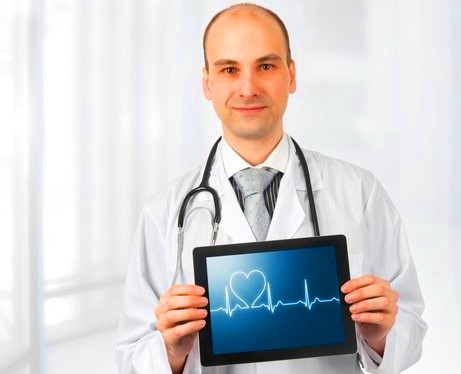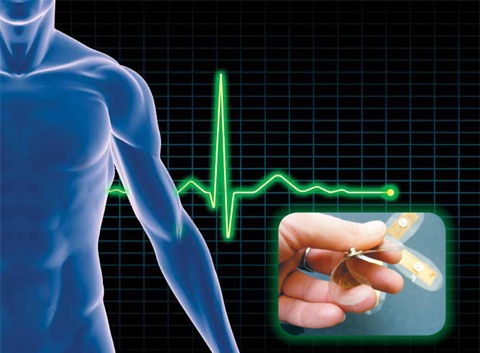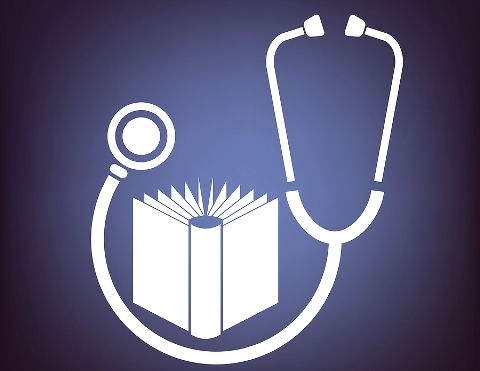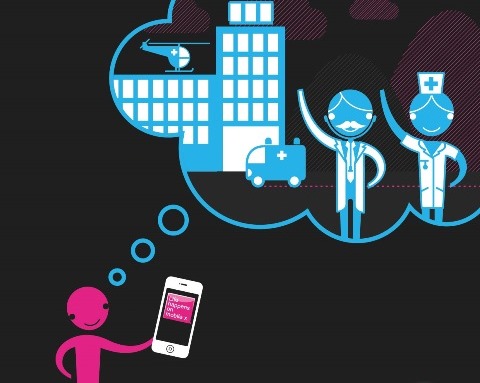
Communicating accurate information quickly is a critical part of the Healthcare industry. Efficient communication tools have a profound effect on the quality and safety of patient care, and also have a huge bearing on patient satisfaction. Yet many caregivers are still limited to pen, paper, and pagers with email and Web based knowledge resources slowly rolling out.
Today caregivers are overwhelmed with more and more information, but what they need is the right information, in the right context, at the right time the point of care. This lag in technology adoption to improve communication poses significant risk for patients because it doesn’t provide real time access between clinicians, and makes it more challenging to coordinate care. In fact, there are many cases around the world where patients have died because they were not connected with the appropriate medical expertise in a timely manner.
At the same time, modern communication tools can increase efficiency in care helping care givers serve the growing number of patients they see each week. Modern communication technologies readily available from companies such as Microsoft can help meet these challenges and enable doctors to serve their patients with quality advice in a timely manner.
Seamless communications is what is needed in order to ensure high quality of evidence-based, time and cost-efficient patient care. Established tools can unite all the players in real time and across multiple communications channels, whether connected from their desktops or remote devices in patient care facilities.
Challenges facing healthcare professionals today
Expertise is crucial in healthcare providing the best care to patients today involves frequent sharing of knowledge and collaboration with other caregivers. However, today’s healthcare providers are constantly challenged to deliver more results while still delivering quality advice to patients. Physicians are faced with a barrage of daily challenges, including:
Diversity of healthcare teams. Healthcare is an information science and the pace of discovery of new diagnostics and therapeutics is far outstripping the health system’s ability to distribute this new knowledge. The medical workforce is responding to this explosion in new medical evidence by super-specialising, making clinicians more skilled than ever at diagnosing and treating diseases.
Yet the trend toward medical specialisation is leading to a fragmented model of communication that inhibits patient care. No longer does information flow directly between a single doctor and his or her patient, but treatment is delivered by a whole cadre of caregivers from the primary care physician, to a variety of specialists, nursing staff and laboratory technicians.
Given this diversity of patient-care teams, healthcare professionals are hindered by a lack of tools that can provide time-sensitive information to each other. For busy healthcare professionals moving from room to room, station to station, the ability to bridge those distances while collaborating is critical to the patient care process.
Proliferation of paper-based healthcare records. The growing amount of paper-based information and patient records in today’s healthcare organisations make it difficult to find and aggregate the patient information caregivers need without having to quickly flip through multiple pages to find the crucial information required for an accurate diagnosis. Disconnected and proprietary information systems can increase error rates. Caregivers need a way to share critical patient information and knowledge in a timely and accurate manner, but quality healthcare is more than just data it’s also experience. Clinicians need tools which will connect them with peers who have a deep understanding of the ailment and an additional perspective on the condition or patient?s history.
Constant innovation and training. The relative absence of real-time connectivity between clinicians means that healthcare has the opportunity to benefit from the network effect that other industries have utilised to share skills and knowledge, where much like the fax machine or Internet, the more people in the network, the more valuable it becomes. Clinicians may not be able to read every journal article that is published, and may only able to really share knowledge at annual conferences, which require time out of the office. Healthcare organisations can find it expensive to educate staff in remote locations. In a knowledge-driven industry like healthcare, efficient access to up-to-date information, insights and colleagues is critical to success. Therefore, workforce development requires an effective communication and collaboration system.
Eliminating islands of communication between healthcare teams
Envision a world where modalities for both real-time and asynchronous communication begin to merge on the desktop, PDA or Smartphone. Imagine doctors scheduling a virtual consultation with colleagues as easily as they can schedule an appointment in Outlook today.
As clinicians become even more mobile, Unified Communications enables employees to spread across the group?s network to connect with their colleagues in remote environments and access critical patient records, medical information and opinions from the devices and applications they know and use every day.
Unified Communications enables knowledge to be shared real-time across geographical distances. These tools create peer to peer networks which will facilitate more instantaneous knowledge-driven decisions, resulting in greater efficiencies in health systems and improved outcomes for patients. Healthcare is benefiting from the fact that Unified Communications tools have become commodities, which means price points are now well within budgets.
To understand how Unified Communications can be used by caregivers in day-to-day work, look to a hospital intern making daily rounds in the hospital, who suddenly needs an urgent specialist consultation for a patient.
Using Office Communicator on a Windows Mobile-device, the intern can get an immediate view of the doctors in the hospital directory and their areas of expertise. The intern can reach beyond the specialists they personally know and access a range of available people with appropriate skills. With real time presence status updates, he can see immediately if someone can take a message or a phone call and doctors can set up rules on how, when, where, and on which devices they want to be contacted.
Specialists will show up as unavailable when in the operating theatre or on rounds, as desired. But the intern now has a range of other specialists to seek counsel from that are available and can respond. He can then seek advice through an Instant Message (IM), telephone conversation, instant video conference (even from the mobile device) or simply by sending an email for less urgent questions.
Care teams can consult colleagues in other locations on patient care and treatment options by starting a Web conference in Instant Messenger. Their contacts could be in another part of the hospital, another city, or in a different country altogether.
What this means for caregivers today is that they are no longer restricted to the telephone for communicating with colleagues or patients around the world they can choose what works best based on the need for a quick question, an in-depth inquiry, or a back and forth exchange. No more waiting on hold or playing phone tag. Furthermore, as communication technology converges to the computer and is increasingly facilitated by the Internet, a doctor’s choice of devices opens up. The office telephone, mobile Smartphone, Pocket PC, laptop, Tablet PC or desktop PC will all be able to do the same job for any need, be that instant message, e-mail, voice, or video communication. These Unified Communications solutions are robust, affordable and effective today.
Looking to the future, this technology will also have a profound effect on the way hospitals conduct meetings and training in the future. The use of multimedia Web conferencing and interactive e-learning technologies will absolutely explode in healthcare as we increasingly communicate electronically in the office and at home for grand rounds presentations, staff training, patient education, and more. Finally, advances in speech recognition and the incorporation of speech recognition technology into Unified Communications will open up new vistas for securely accessing patient information and relaying clinical orders and steps taken today to integrate this technology into patient care will continue to deliver enhanced capabilities in the future.
Future
Today’s progressive businesses use a wide variety of tools and technologies to facilitate communication, and we have an opportunity to extend this into a healthcare setting. By taking advantage of robust information technologies including Unified Communications, we have the opportunity to transform healthcare and improve patient care. We can empower caregivers to collaborate and communicate with one another to provide more accurate, effective and accessible care to patients. Medical science is a knowledge industry and patient care is about helping people. Unified Communications brings knowledge and people together to meet marketplace demands while improving patient health.







